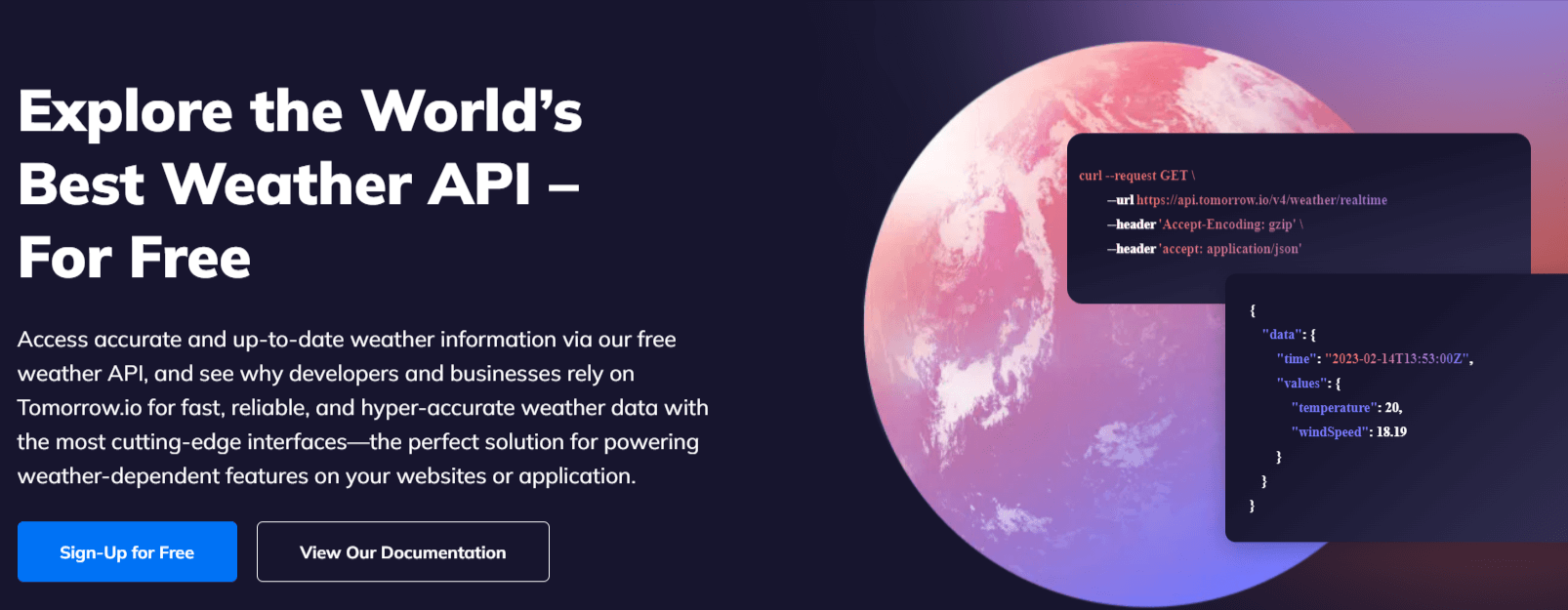What Is Weather AI Forecasting?
Traditional weather forecasting methods have become essential for most businesses but can now be done faster and more easily with AI.
Updated April 30, 2024.
Accurate weather forecast APIs have proven to be essential for businesses of all sizes to make informed decision-making. From optimizing supply chains and logistics to managing energy consumption and safeguarding physical assets, weather conditions can significantly impact operations and profitability.
Traditionally, forecasting has relied on complex models simulating atmospheric processes. Now, artificial intelligence (AI) is poised to drive weather prediction capabilities to new heights. With its ability to process complex data sets and identify patterns humans might miss, AI is unlocking unprecedented accuracy and speed in weather forecasting.
How Traditional Weather Forecasting Works
Traditional weather forecasting is centered around the concept of numerical weather prediction (NWP). This approach builds upon decades of meteorological research, resulting in complex mathematical models that simulate the ever-changing relationships between atmospheric variables like temperature, wind, humidity, and precipitation. To feed these models, we need a vast network of weather observations, including data from weather balloons, satellites, and ground-based sensors.
Supercomputers are then tasked with processing this immense volume of data within the framework of the NWP models, and meteorologists analyze the output, refining the forecast based on their expertise and understanding of weather patterns. Of course, while NWP has served as the backbone of weather prediction for a significant period, its reliance on complex simulations can lead to limitations, paving the way for the revolutionary advancements offered by AI-driven forecasting approaches.
The Rise of Weather AI Forecasting
The rise of AI in weather forecasting signifies a transformative shift towards more precise and responsive predictions, leveraging the power of machine learning and vast data analytics.
By analyzing comprehensive datasets (including satellite imagery and sensor data), AI identifies intricate atmospheric patterns missed by traditional methods at much faster rates and with far greater accuracy.
Key Benefits of AI-Driven Weather Forecasting
- Enhanced accuracy: AI algorithms process complex data without the risk of human error to provide highly accurate forecasts.
- Customized forecasts: Tailored predictions can meet the specific needs of various industries and sectors.
- Operational efficiency: Businesses can optimize operations with reliable weather insights.
- Resource management: Improved forecasts enable better planning and resource allocation.
- Increased safety: Advanced warnings and detailed weather information enhance safety measures for communities and businesses.
How We Do It At Tomorrow.io
At Tomorrow.io, we've revolutionized weather forecasting by harnessing the power of AI and a unique constellation of satellites, creating a system that far surpasses traditional methods. By integrating vast datasets, including real-time observations from our own satellites and various ground-based sensors, our AI algorithms are trained to detect intricate patterns and insights that traditional models can't capture.
This approach not only enhances forecast accuracy but also allows us to offer insights tailored to the specific operational needs of our customers. Whether it's optimizing supply chains, improving energy management, or ensuring the safety of assets and personnel, our AI-driven forecasts empower businesses and governments alike to make informed, strategic decisions based on the most precise weather predictions available.

